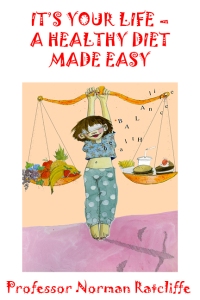In recent years, we have had food crisis after food crisis.
FOOD CRISES TAKE MANY FORMS BUT RESULT FROM TWO MAIN REASONS:
A. Accidental contamination with disease organisms and untested food sources
Examples of this type of crisis are the recent ‘horsemeat scandal’ in which horsemeat was found in ‘beef’ pies/lasagne/meatballs etc, mad cow disease (BSE) was present in hamburgers, and outbreaks of food poisoning from chicken and sprouting beans were contaminated with toxic bacteria. In addition, diseases affecting our food supply include foot and mouth disease in cattle and bird flu in chickens, both resulting in wholesale animal slaughter. These crises may be caused by bad practice in handling food or in feeding livestock, and usually result in immediate action at governmental levels to prevent contaminated animals entering the food chain. Only occasionally do these events cause wholesale human mortalities in the West.
B. Deliberate contamination with artificial chemicals, excessive fats, salt, and sugar
These crises are caused by food manufacturers adding preservatives, sweeteners, colorants, flavourings, fats, salt and sugar to make food more attractive to the consumer. The crises arising from these contaminants usually develop slowly and are insidious, creeping up on the population, sometimes taking years before a problem is recognised and linked to a food source, as with the obesity epidemic.
PREVENTION
Type A crises
With these, the consumer is often in the hands of the government to take action, as with mad cow disease (BSE). The public was unaware that cattle were being fed contaminated meat and bone meal from other diseased cattle. However, avoiding processed food (pies, faggots etc) which may contain unknown sources of meat, as with the horsemeat fiasco, may provide some protection. For example, with BSE, those eating hamburgers appeared to be particularly at risk.
However, cases of food poisoning from eating or handling chicken can be prevented by:
i. washing hands thoroughly before and after handling uncooked carcases
ii. cooking the chicken as per instructions on packaging and until the juices run clear from a knife inserted.
iii. storing the uncooked chicken in a container well away from other foods such as salads.
iv. washing all knives and surfaces in contact with the uncooked chicken thoroughly, after use, with bleach.
These precautions would help prevent many of the 300,000 reported cases of food poisoning each year, with about 70% of raw chicken contaminated with Campylobacter bacteria causing food poisoning.
Similar advice applies to uncooked fruit and vegetables, all of which should be washed, even if they are peeled, before eating. Avoid raw bean spouts, which are cultivated at elevated temperatures favouring bacterial growth, especially if pregnant.
Type B crises
With these, prevention is, in theory, in the hands of the consumer. These crises are much more insidious than Type A and creep up over many years. Thus, the extent of the obesity epidemic sweeping many countries, with nearly half the population overweight or obese, has only recently prompted some governments to take action. This is despite incessant warnings from doctors over many years. “Fat is beautiful” has become a dangerous slogan, attempting to normalise excessive and health-threatening weight. Many such people will not only face major health problems but also die at earlier ages than their parents or grandparents generations.
Prevention can only be successful if people are educated as to the harm caused by excess fats, salt and sugar in processed food. Unfortunately, food manufacturers are generally more concerned with profit and their shareholders than with the health of the population. They also adopt clever marketing ploys to increase the consumption of their products.
Examples of marketing ploys adopted are given below so be aware of such manipulation and avoid at all costs:
1. One supermarket in the UK sells curry, pasta and Chinese meals under the label of “Healthy Living” as well as under the label “Finest”. The Finest are more expensive and have much higher levels of fat and salt-often 3 times higher. The Finest label makes the consumer think they are getting something special for their money!
2. Coca Cola and Pepsi Cola are competing to go “green” with their bottles and delivery trucks. Having damaged the environment for generations with their plastic bottles, they are now taking on the cloak of eco-warriors! These companies have been brainwashing the public for generations with their chemical and sugary mixes. These mixes either contain sugar or else artificial sweeteners and are labelled “light” or “zero” with the sugar substituted by artificial chemical sweeteners that may fuel the consumers appetite.
3. Particularly obnoxious was the recent campaign by Kellogg’s for “Coco Pops” in which they targeted bus stops with the slogan “Ever thought of Coco Pops after school”? Wake up parents as 100 grams of Coco Pops contain 35 grams of sugar ie. 7 teaspoons of sugar!! Do you really want little Johnny or Mary to go to or come home from school with this dose of sugar?!
One sensible step would be to consult “Its Your Life-A Healthy Diet Made Easy” and find out what is in your food (it costs around £4).
It is good to take more of an interest in your food and to be sceptical about food manufacturers claims. You can also find useful information in the other posts on this site, and you will find comprehensive advice in my main work:
“It’s Your Life: End the Confusion from Inconsistent Health Advice”
NB. If you enjoyed this blog then why not press the “follow” button, enter your email and confirm your interest to receive monthly updates when new articles are published . It costs nothing and only involves receiving 1-2 emails per month.

